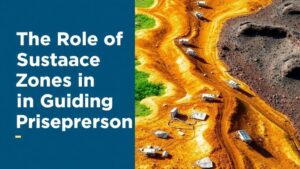Developing a Small-Scale Ore Processing Plan: Steps to Start
Developing a Small-Scale Ore Processing Plan: Steps to Start
The development of a small-scale ore processing plan can be a rewarding endeavor, both financially and environmentally. With the right approach, small-scale processing can ensure that local communities benefit from their natural resources while minimizing the ecological footprint. This article outlines the essential steps necessary for establishing an efficient small-scale ore processing plan.
Step 1: Conduct a Preliminary Assessment
The first step in developing a small-scale ore processing plan is to conduct a thorough preliminary assessment. This includes evaluating the ores composition, market demand, and local regulations.
- Analyze the Ore: Understanding the mineralogy and chemistry of the ore is critical. For example, if targeting gold, ascertain whether the ore is free milling or requires chemical leaching.
- Market Research: Determine the demand for the target metals or minerals locally and globally. According to the US Geological Survey, the price of gold fluctuated between $1,200 and $2,000 per ounce in recent years, showcasing significant market potential.
- Regulatory Compliance: Familiarize yourself with local mining and environmental regulations. In many regions, obtaining permits is essential before starting any processing activities.
Step 2: Develop a Business Plan
Once the preliminary assessment is complete, the next step is to develop a comprehensive business plan. This document serves as a roadmap for your operations.
- Financial Projections: Calculate initial costs (equipment, labor, permits) and operational costs (utilities, maintenance). For example, setting aside approximately $50,000 to $100,000 for small-scale operations can be a good starting point.
- Marketing Strategy: Identify potential buyers for your processed ore, whether they are local smelters, jewelry manufacturers, or international brokers.
- Operational Plan: Outline the processing methods to be used. For small-scale operations, methods such as gravity separation or flotation may be more feasible than more complex and costly techniques.
Step 3: Select Appropriate Processing Techniques
The choice of processing techniques directly impacts the efficiency and profitability of your operation. Considerations include the type of ore and the desired purity level of the final product.
- Gravity Separation: This method exploits differences in density. It is particularly effective for coarse materials and less expensive than chemical processing.
- Flotation: Flotation is used for finely crushed ores and involves using chemicals to separate minerals from the ore. This method can yield high purity and recovery rates.
Step 4: Environmental Management Planning
Environmental concerns must be a central focus when developing an ore processing plan. Not only is it essential for regulatory compliance, but sustainable practices can enhance community trust and ensure long-term viability.
- Waste Management: Develop strategies for managing tailings and other waste products. For example, tailings can be treated or repurposed to minimize land use disruption.
- Water Management: Adopt water recycling methods to reduce consumption. In regions where water is scarce, this is particularly critical.
Step 5: Use the Plan
After developing the plan, the next phase is implementation. Begin with securing funding and acquiring the necessary equipment.
- Funding Sources: Explore different funding avenues such as grants, loans, or partnerships with larger mining companies.
- Equipment Procurement: Depending on the chosen processing technique, acquire equipment such as crushers, mills, and separation units.
Step 6: Ongoing Monitoring and Evaluation
Continuous monitoring and evaluation of operations are crucial for identifying inefficiencies and ensuring compliance. Key performance indicators (KPIs) may include recovery rates, throughput tonnage, and environmental impact.
- Regular Audits: Conduct assessments to evaluate operational efficiency and compliance with environmental standards.
- Adjustments: Be prepared to adapt processing techniques based on performance data and market changes.
Conclusion
Developing a small-scale ore processing plan requires careful planning and diligent execution. By conducting thorough assessments, creating a robust business plan, and focusing on sustainable practices, individuals and communities can successfully navigate the complexities of ore processing. Embrace innovation and stay informed about industry developments to maximize profitability while maintaining environmental stewardship.
Ultimately, small-scale ore processing can not only be a lucrative venture but also contribute positively to local economies and environmental sustainability.


